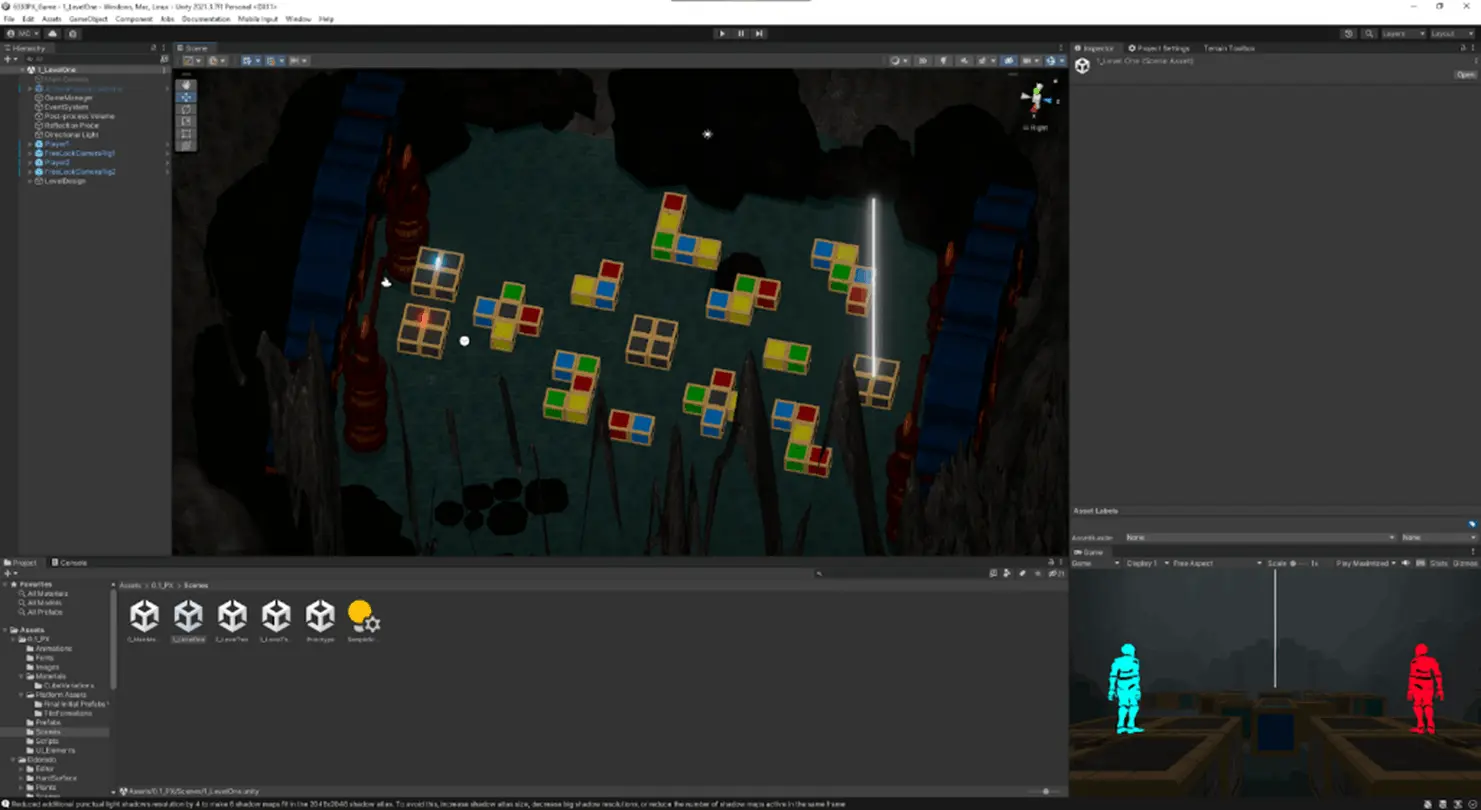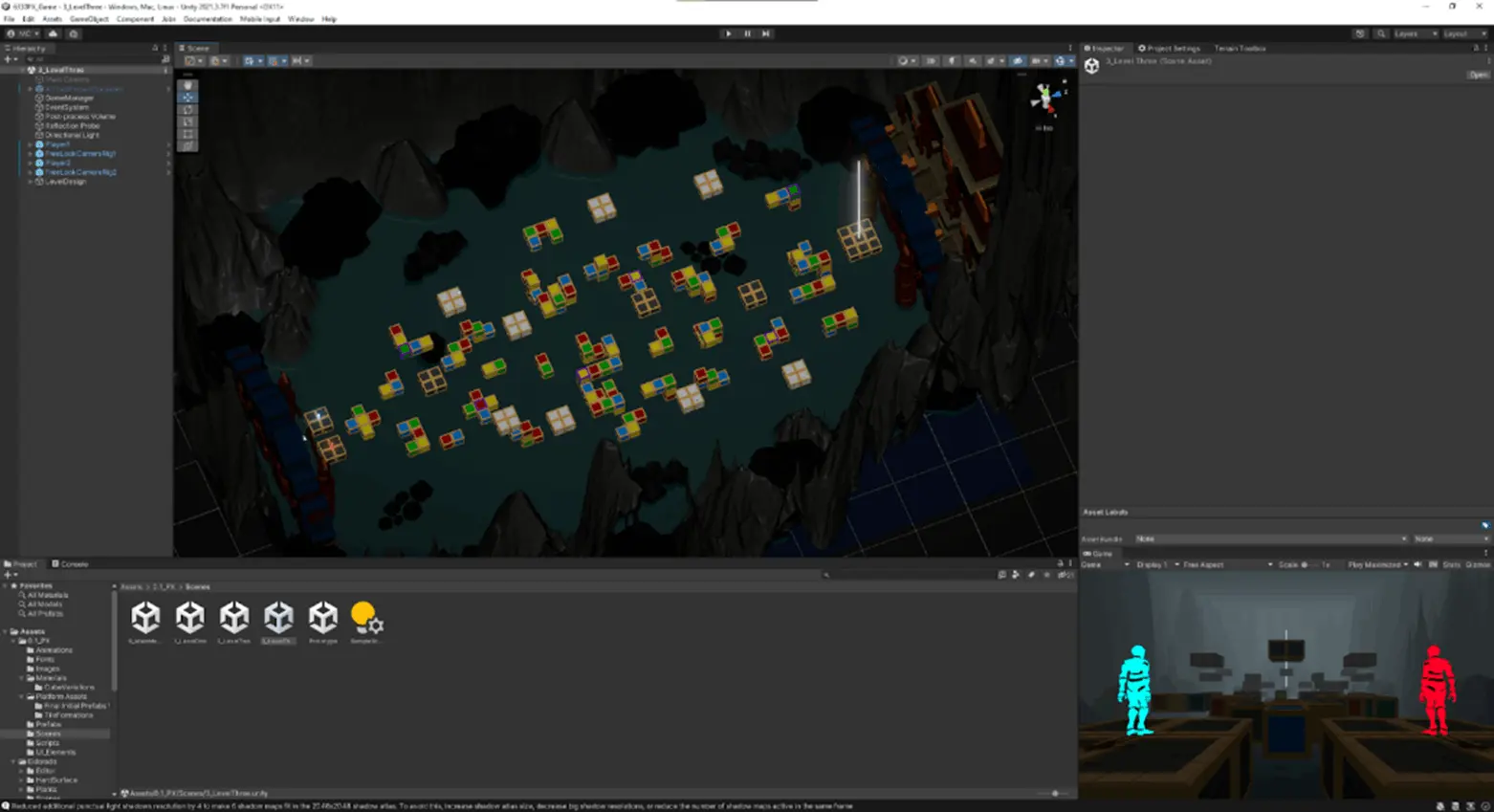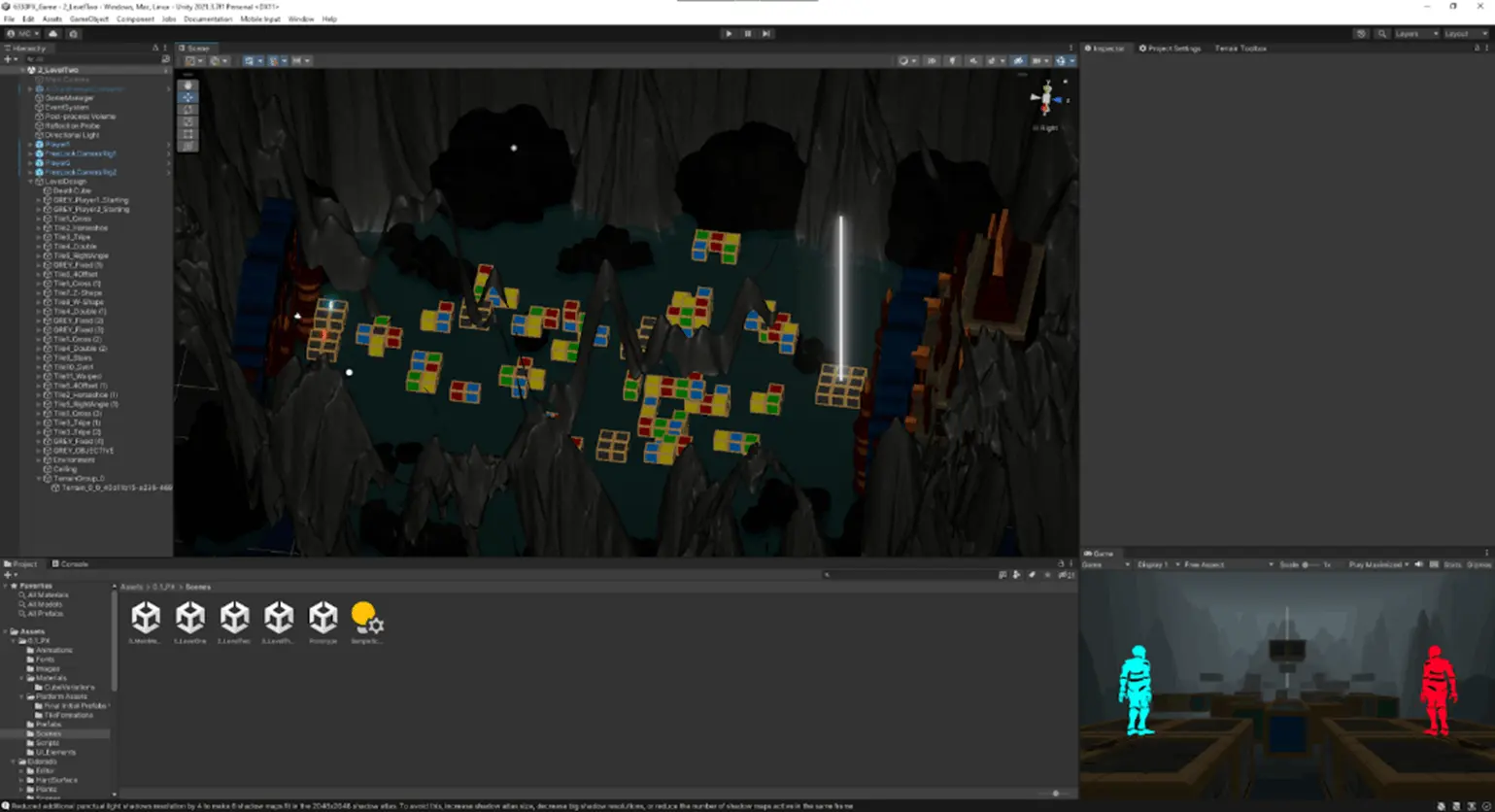
Initial prototyping of the idea
Tetricks began conceptually as a puzzle game with builder elements, where the player needs to build a structure to get from one point to another, move existing objects around, and strategize to reach their goal. The game design took the player experience concepts of cooperation and competition as its focus, and through an iterative design process, produced a game that gives players a varied game experience depending on which side, collaborative or competitive, they leaned towards. The study is built on the idea that when elements of both competition and cooperation are present in a game’s design, it improves the player experience more than if only one of the concepts were used. The paper produced from this study is attached below.

Initial prototyping of the idea
Game Concept: The basis for Tetricks is Tetris, first invented by Alexey Pajitnov in 1985. It is a 2D no-win game where the computer calculates the game map and makes decisions on which subsequent block or tetramino (out of seven) will drop [3]. Tetricks takes the block arrangement mechanic from Tetris and converts it into a two-player turn-based puzzle game in 3D space. Players start on the same platform, and the goal is to reach the end platform in the distance. The path in between is up to the player to build. Square blocks make up a variety of differently shaped tiles, which the player has to match together by color coordination in order to connect a continuous path to the goal. This presents an alternative strategy and objective, and players will have to choose whether to build towards the power-up, or the finish line.

Level 1

Level 2
Level Design: The game was initially designed to be a single level, with a predetermined start and end point. The path in the middle is up to the player to organize and build themselves. The surrounding city is not interactable, and only serves as a backdrop. The only playable parts of the level are the blocks and tiles that float above the city.
This game grants the players total autonomy in their approach from the offset. They can decide whether they want to collaborate with their partner, or compete with them. They decide how to place their blocks, and where to move in the game world. The tile-matching and building is meant to be a more engaging and difficult version of Tetris, by making the players consider movement on three axes instead of two. The game is designed to be welcoming to all kinds of players.

Level 3
Conclusion: The iterative design process of Tetricks illustrated the importance of not over-complicating a game’s design in the first version. Managing scope is a learned skill that requires practice, but the game’s initial lack of scope was immediately evident from the first playtest. Though the idea of collaboration versus competition is an interesting one, executing it effectively so that both are present in the game and have a significant effect on player motivations and changes in strategy is much harder than it sounds to implement successfully. The first play test was very informative for the game design in terms of overall aesthetics, the learning curve, ease of use of the mechanics, and effectiveness of the game concept. All of these categories were improved for the second version of the game. It was much easier to focus the design and delivery of the game after player feedback.

Team Picture
Built with
Landing Page Builder